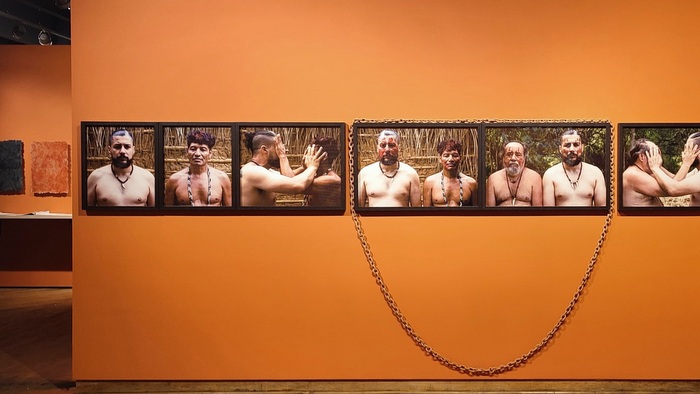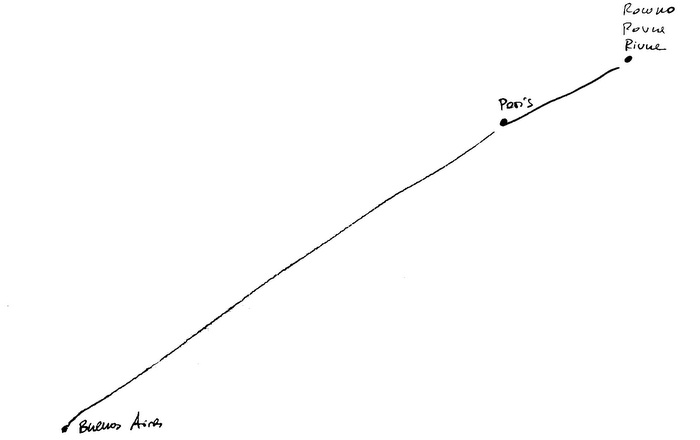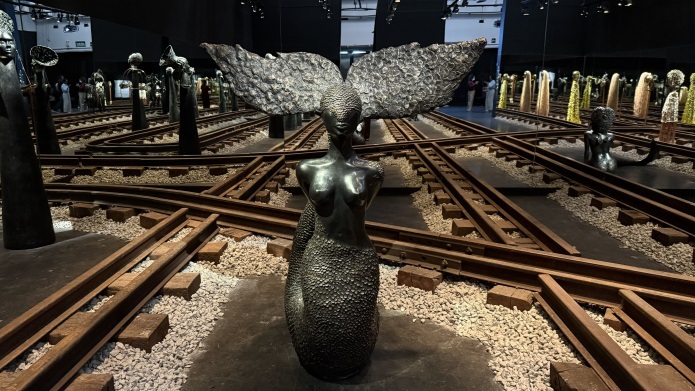We are pleased to announce the opening of the solo show Vermilion Like Embers by Andrey Guaianá Zignnatto at the Museum of Latin American Art, USA.
The solo show presents new works, such as Uramaitõ and Mrai, developments from the Abaporu series and a new configuration of Alicerce installation.
The museum points out that "it is possible to see elements that demonstrate the artist’s effort to reorder his thoughts in this trajectory, from the urban to the indigenous context, which is an effort to balance the forces of such distinct universes."
Andrey Guaianá Zignnatto is the heir of indigenous grandparents from the villages of Inhampuambaçu, who were silenced by the colonial city of São Paulo of Piratininga; a place historically dominated by brick and concrete houses and buildings, and today occupies almost the entire territory in the megalopolis. The self-taught artist, visual arts professor, social activist, and descendant of the Tupinaky’ia and Gûarini peoples, worked as a mason’s assistant from age 10 to 14 years old. These ancestral affective memories are the basis for the conceptual development and methods used in his artistic production.
Considering the current condition of many territories that were originally indigenous and that are now covered by concrete, it is difficult to think about the idea of a place for a campfire in this urban context. This traditional custom of the native peoples, as a way to provide an educational space and transmit ancestral knowledge through oral communication, along with many other values, has been violated and buried in these territories. For this reason, when indigenous people, who have had their cultural universe erased, opt for the process of resumption of their ancestry, it transcends mere symbolic issues, even
though this process originates in symbolism. The expression of the feeling of belonging is constructed through images, narratives, and memories of a lively and spiritual place.
Andrey Guaianá Zignnatto starts his trajectory as an artist using his memories from the time he worked as a mason’s assistant and the knowledge that came from it. In his most recent work, the artist’s shift from issues about the civil construction to his indigenous ancestry is very clear. In the work presented at the exhibition, it is possible to see elements that demonstrate the artist’s effort to reorder his thoughts in this trajectory, from the urban to the indigenous context, which is an effort to balance the forces of such distinct universes. In this sense, it can be said that the artist, as many other contemporary indigenous artists, found in art and its poetic strengths, instruments that have been helping him imagine and make this possible resumption happen, as well as reinhabit the Tekoha (where the collective way of being is produced). This is the place that was originally organized and inhabited by indigenous peoples, a space to produce knowledge in order to safeguard the ancestral memory.
The work of an indigenous artist is the type of work that comes from the attempt to translate the indigenous struggle, in favor of the physical territory, as well as the subjective space of thought. This is what makes these pieces so special because it translates this movement of resistance, survival, and expansion within these spaces. It is not simply an object but the result of an ancestral and transcendental knowledge.
On the cover: "Uramitõ", 2024.
Source: Janaina Torres Galeria















